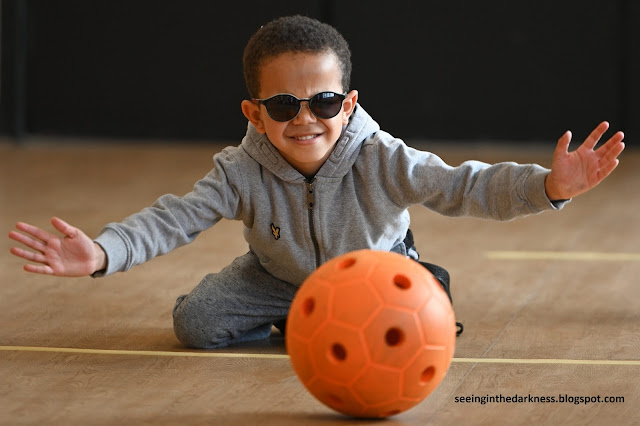Discovering the World Through Touch: Activities for Blind Toddlers
As a counselor who deals with many mothers with children who are blind or have visual impairments, I understand the unique joys and challenges of parenting a child with visual impairments. While it may feel overwhelming at first, with the right approach and resources, you can create a fun and enriching experience for both you and your child.

One of the most important things to remember is that all children, regardless of their vision, need opportunities to engage in activities that stimulate their minds and bodies. With that in mind, there are various games and activities that are well-suited for blind toddlers.
Tactile Play: Tactile play is one of the most popular activities for blind toddlers. This type of play involves introducing different materials and textures to your child through touch. For example, you can place a variety of objects in a box and let your child explore them. Or, you can use felt or foam shapes to create a tactile game board and move pieces around it. This type of play helps develop their cognitive and motor skills and encourages them to explore the world around them.
Music: Music is another excellent activity for blind toddlers. This can include singing and playing instruments, but it can also encompass activities like tapping on drums, shaking maracas, or playing xylophones. Music is a great way to keep a child engaged, and it also helps develop their aural perception.
Reading with touch: Encourage the child to touch and feel different objects, such as books with raised pictures or textures. This can help them to develop their sense of touch and improve their cognitive skills.
Audio books: Audiobooks can be a great way for blind children to experience stories and develop their listening skills. Many audiobooks are specifically designed for children with visual impairments at local libraries or online.
Sensory walks: Take your baby on sensory walks where they can explore their environment through touch, sound, and smell. You can point out different textures, smells, and sounds for them to touch, experience, and describe.
Art and crafts: Art and crafts can also be adapted for a blind toddler. For example, you can use Braille labels or raised lines to help them feel the different shapes and textures. This type of activity can help to develop their creativity and improve their fine motor skills.
Games: Board and card games can also be adapted for a blind toddler. For example, you can make a tactile version of a board game or create a card game where the cards have different textures. These games help stimulate the child's mind and can be a great bonding experience.

In conclusion, playing with a blind toddler can be a wonderful and rewarding experience for both you and your child. From tactile play to musical activities and adapted board games, there are many ways to engage and bond with your little one. And by being creative and patient, you can create a rich and enjoyable experience that your child will always cherish.
Do let me know if you need any further help with resources, or if you have any tips or suggestions of your own. ☮



Comments
Post a Comment